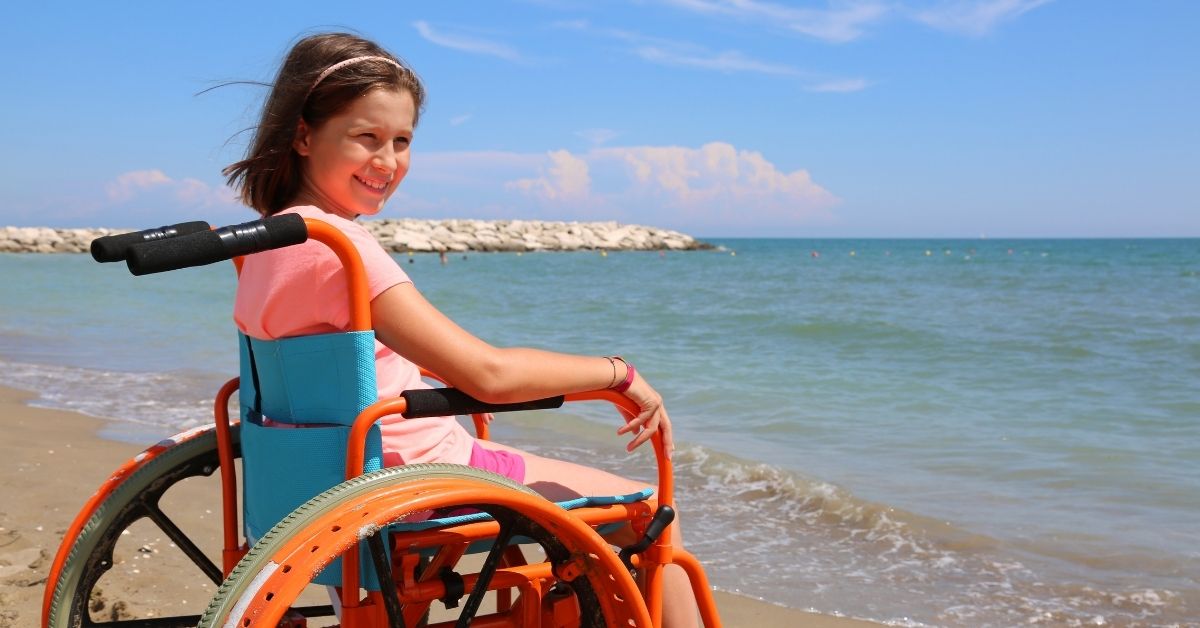
Author: Alison L. Christy, MD, PhD
Providence Pediatric Neurology at St. Vincent Medical Center – Portland, Oregon
Reviewed: May 2021
SUMMARY
Multiple sclerosis (MS) is an autoimmune disease that affects the neurons of the brain and spinal cord. It causes symptoms that come and go, but over time it can lead to problems with walking, vision, or coordination. There is no cure for multiple sclerosis. However, there are many treatments that can help prevent problems from developing.
JUMP TO
Disorder Overview
DESCRIPTION
The immune system is made up of immune cells. These cells usually fight off threats from the outside, such as viruses, bacteria, and fungi. In autoimmune diseases, the cells of the immune system attack the healthy cells of the body.
The nerves of the body are like electrical wires. They have a coating on the outside called myelin.
Cells from the immune system can sometimes attack this myelin outer coating. In multiple sclerosis, immune cells attack myelin inside the brain and spinal cord. When the myelin is broken down, the brain can make some repairs, but over time scars develop, and the nerves cannot conduct electricity. This is why multiple sclerosis is called a demyelinating disease.
SIGNS AND SYMPTOMS
The breakdown of myelin can cause various symptoms. The symptoms will depend on the areas of the brain and spinal cord affected. They include:
- Blurry vision as well as loss of vision in one or both eyes (may be temporary or permanent)
- Double vision
- Weakness, numbness, cramping, or tingling of one part of the body
- Tremor of one part of the body
- Speech problems, like slurred speech
- A loss of balance or coordination
- Problems with urination or stooling (accidents)
The symptoms from multiple sclerosis last for at least 24 hours. They usually last longer. Sometimes the symptoms go away with time (a remission). Sometimes they last for the rest of a person’s life.
The most common type of multiple sclerosis is called relapsing-remitting, meaning that people develop symptoms, get better, and then develop new symptoms again. When symptoms return, they are called exacerbations, or flares.
Children often recover well from flares. They may look like they are not sick at all. Over time, however, flares can cause serious problems with vision, walking, or balance.


CAUSES
No single factor has been shown to cause multiple sclerosis. There are many factors that affect MS risk, including:
Genetics
If one identical twin has MS, then the other has a 1 in 4 chance of developing MS. This is much higher than in the general population. Because identical twins have the exact same genetics, this tells us two things. First, MS is related to genetics. Second, there must also be other factors that lead to MS.
Hormones
MS is extremely rare in children under the age of 10. This means that the hormones that increase during puberty are likely important for disease. MS is more common in females than in males. Therefore, female hormones like estrogen may play a role. However, MS can sometimes improve during pregnancy when female hormones are highest.
Vitamin D
Vitamin D is made by the body through exposure to the sun. People who live in northern areas of the world get less vitamin D. Those who live in norther areas before age 15 are more likely to develop MS. This may mean vitamin D early in life can help prevent multiple sclerosis. Taking vitamin D can also reduce flares of multiple sclerosis. However, it should be used in combination with other medications.
Smoking
Epstein-Barr virus (EBV)
In small children, this virus can cause a mild cold or no symptoms at all. However, if someone gets the virus as a teenager or young adult, they can develop infectious mononucleosis (or mono). Having mono increases the risk of developing MS. There is hope that a vaccination against EBV could reduce the number of people who get MS.
DIAGNOSIS/LABORATORY INVESTIGATIONS
Multiple sclerosis can usually be diagnosed with a picture of the brain. This picture can be taken with magnetic resonance imaging, or MRI. The areas where the myelin is affected are called lesions. A medicine called contrast may be used to help see these lesions.
Once a child is receiving treatment for MS, their doctor may get an MRI if new symptoms develop. Their doctor may also order an MRI to make sure there are no new lesions in the brain, even without symptoms.
Sometimes a doctor needs to do more tests to confirm the diagnosis. These may include blood tests. A doctor may also want to test the cerebrospinal fluid that is naturally present around the brain and spine. This can be done using a procedure called a lumbar puncture.
A doctor who suspects MS may recommend that the child goes to an ophthalmologist (eye doctor) or neuro-ophthalmologist (brain-eye-doctor). Both of these specialists can look for vision changes that are common in MS.
TREATMENT AND THERAPIES
Treatment for Acute Symptoms of Multiple Sclerosis
During an MS flare, a doctor may recommend medications that suppress the immune system. One example is steroids. These have been shown to shorten the length of time of a flare. They have not been shown to prevent disability.
Treatment for Chronic Symptoms of Multiple Sclerosis
There is currently no cure for MS. Most people with this diagnosis will need to take medicine for the rest of their lives.
Medicines that treat MS change the way the immune system works. This is how they prevent new symptoms (or flares) from occurring. Medicines cannot repair damage to the brain and spinal cord. However, they are very important in preventing new damage.


Medications for MS include:
Injections
Oral medications
Infusions
These medications are given intravenously by a health care professional. They include rituximab and natalizumab. Infusions are the most effective medications at preventing flares in MS. However, they also have the highest risk of severe side effects. For instance, they can lead to a rare but serious brain infection called progressive multifocal leukoencephalopathy.
Families will need to discuss the risks and benefits of these medications with the child’s doctor. Together, they can determine which is best for the child.
Other medications may help with the symptoms of MS. For instance, they may help with fatigue, headache, problems with urination, or pain.
It is important for a child with MS, to:
- Eat a healthy diet
- Exercise
- Take vitamin D every day
These are safe, healthy, and natural ways to prevent further MS relapses. However, in most cases, a medication will still be necessary.
OUTLOOK
Multiple sclerosis is a lifelong disease. Over the last thirty years, many new medications have been discovered that can prevent MS flares. Young people diagnosed today have a better chance of living a full life. They can live well into old age, and without physical disability.
Having MS does not affect the ability of a person to get pregnant or give birth to children. Some medications taken for MS can be safer than others during pregnancy and breastfeeding. The treatment of MS during pregnancy should be discussed with a doctor. It is best to discuss this before a pregnancy occurs.
Many children with MS may have no physical disabilities. Still, they may develop problems with attention, concentration, and information processing. It is important to understand that this is not the child’s fault. It is another symptom of the disease.
Sometimes these changes can be subtle. A parent may not pick up on a child’s struggles in school. Neuropsychiatric testing can help determine how best to support the child through school as well as after, with jobs and the many complicated tasks of adult life.


Resources
ORGANIZATIONS/GROUPS
Pediatric Multiple Sclerosis Alliance
The Pediatric MS Alliance is a non-profit organization that provides support for the parents of children with MS. They connect families worldwide with other pediatric MS families, and with pediatric neurologists who specialize in demyelinating disease. They advocate for pharmaceutical resources and provide guidance with educational challenges.
PMSA hosts a private community Facebook group to connect parents and/or caregivers of children under the age of 18 worldwide who have been diagnosed with Multiple Sclerosis and similar demyelinating disorders.
National Multiple Sclerosis Society
The National Multiple Sclerosis Society’s vision is: A World Free of MS.
The website features a comprehensive Pediatric MS Resource section. In addition, there is a newly launched Teens and 20’s Family & Friends Group virtual support group and a 17 and Under Self-Help Group that meets virtually.
PUBLICATIONS
JCN: Medications for Treating Multiple Sclerosis in the Pediatric Population
Podcast from SAGE Neuroscience and Neurology/Journal of Child Neurology (JCN). Dr. Christy talks with Grace Gombolay, Pediatric Neuroimmunologist at Children’s Healthcare of Atlanta and Assistant Professor at Emory University School of Medicine.
JCN: What Your Pediatric Neurologist Wants You to Know
JCN’s Residents and Fellows Board Director, Dr. Alison Christy, interviews Dr. Farida Abid, Assistant Professor in Pediatric Neurology at Texas Children’s Hospital about Neuromuscular disease.
JCN: What Your Pediatric Neurologist Wants You to Know
Podcast from SAGE Neuroscience and Neurology/Journal of Child Neurology (JCN). JCN’s Residents and Fellows Board Director, Dr. Alison Christy, interviews Dr. Brenda Banwell, chair of neurology at the Children’s Hospital of Philadelphia about Pediatric Multiple Sclerosis and Neuroimmunologic Disease.
JCN: Behavioral Symptoms in Pediatric Multiple Sclerosis: Relation to Fatigue and Cognitive Impairment
Podcast from SAGE Neuroscience and Neurology/Journal of Child Neurology (JCN). Author Leigh Charvet, PhD, discusses her article Behavioral Symptoms in Pediatric Multiple Sclerosis: Relation to Fatigue and Cognitive Impairment.
Child Neurology Foundation (CNF) solicits resources from the community to be included on this webpage through an application process. CNF reserves the right to remove entities at any time if information is deemed inappropriate or inconsistent with the mission, vision, and values of CNF.
Research
ClincalTrials.gov for Multiple Sclerosis are clinical trials that are recruiting or will be recruiting. Updates are made daily, so you are encouraged to check back frequently.
ClinicalTrials.gov is a database of privately and publicly funded clinical studies conducted around the world. This is a resource provided by the U.S. National Library of Medicine (NLM), which is an institute within the National Institutes of Health (NIH). Listing a study does not mean it has been evaluated by the U.S. Federal Government. Please read the NLM disclaimer for details.
Before participating in a study, you are encouraged to talk to your health care provider and learn about the risks and potential benefits.
Family Stories
From the Pediatric Multiple Sclerosis Alliance
Read real life stories from families of children with Multiple Sclerosis who share the importance of Making Connections with other families worldwide living with pediatric MS. Watch a video of the youngest faces of Multiple Sclerosis.
Additional Stories
You can read Personal Stories on the National Multiple Sclerosis Society’s website about others whose lives are affected by MS.
The information in the CNF Child Neurology Disorder Directory is not intended to provide diagnosis, treatment, or medical advice and should not be considered a substitute for advice from a healthcare professional. Content provided is for informational purposes only. CNF is not responsible for actions taken based on the information included on this webpage. Please consult with a physician or other healthcare professional regarding any medical or health related diagnosis or treatment options.
References
Rose ME, Huerbin MB, Melick J, Marion DW, Palmer AM, Schiding JK, et al. Regulation of interstitial excitatory amino acid concentrations after cortical contusion injury. Brain Res. 2002;935(1-2):40-6.
International Pediatric Multiple Sclerosis Study Group. http://www.ipmssg.org
The Journal of Child Neurology, 2021. What Your Pediatric Neurologst Wants You to Know: Neuroimmunology. [podcast] SAGE Neuroscience and Neurology. Available at: http://sageneuroscience.sage-publications.libsynpro.com/jcn-what-your-pediatric-neurologist-wants-you-to-know
Langille MM, Rutatangwa A, Francisco C. Pediatric Multiple Sclerosis. Advances in Pediatrics. 2019; 66:209-229
Mowry EM, Waubant E. Pediatric Multiple Sclerosis. Continuum: Lifelong Learning in Neurology. 2010; 15(5): 181-192
National Multiple Sclerosis Society. Pediatric MS. https://www.nationalmssociety.org/What-is-MS/Who-Gets-MS/Pediatric-MS
United States Network of Pediatric Multiple Sclerosis Centers. http://www.usnpmsc.org/
UpToDate. Patient Education: Multiple Sclerosis in Children (The Basics). https://www.uptodate.com/contents/multiple-sclerosis-in-children-the-basics
Thank you to our 2023 Disorder Directory partners:





